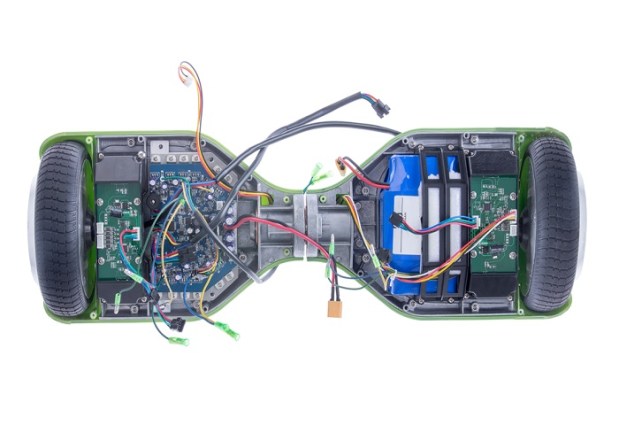Can Millennial Influencers Save Hoverboards From Crashing And Burning?

To the casual observer, it would seem like hoverboards’ moment in the sun is finally starting to end. When the gadgets burst onto the scene in the summer, it seemed like nothing could stop the six to 12 miles per hour of momentum the little motorized boards could muster. However, a few short months later, hoverboards have found themselves at the center of a bit of a scandal that could mar their market reputations.
Wired reported that, because the demand for hoverboards grew so high leading up to and throughout the holiday shopping season, Chinese and American retailers were so focused on mass producing units and shipping them overseas that few took the time to worry about what happens to the hoverboards’ lithium-ion batteries when everything from development to design is subordinated to production schedules.
Now, whether riders are taking their boards out for a glide around the block, leaving them plugged in to charge or just placing them to the side for a break, Wired explained that the shoddy construction is causing the gizmos to spontaneously combust — a sure damper on any holiday trend.
“There is no way to tell when buying, since the catastrophic failure likely will not manifest until the battery is fully charged and discharged several times,” Jay Whitacre, professor of materials science and engineering at Carnegie Mellon University, told Wired. “This charging/discharging mechanically exercises the guts of the cell and typically provides the ultimate trigger for the failure.”
For any other holiday toy craze, safety issues that lead to even a remote chance of sudden fires would be enough to turn consumers away. However, millennials didn’t start buying hoverboards in the summer because they were safe; they started buying them because celebrity influencers made them believe hoverboards were cool.
Quartz gave a rundown of all the rap, hip-hop and pop stars — as well as professional athletes, actors and whatever category Justin Bieber belongs in — who have tweeted, Instagrammed or Snapchatted themselves riding the devices. In some cases, as was the situation when rapper Wiz Khalifa was arrested in August at LAX for refusing to dismount his board, celebrities function as unofficial endorsers of the product. In other cases, like one-hit wonder Souljaboy’s own line of “Souljaboards,” celebs can’t help themselves from trying to make their own way in the world of personal hoverboards.
So, just a handful of days before Christmas, the season’s hottest (literally) toy finds itself stuck between PR nightmares and the support of countless celebrities who have demonstrated great sway over millennials’ spending habits. And while a safety scare might have turned other generations off from picking up a hoverboard before the holidays, a recent report from Defy Media suggests that millennials put more weight in the endorsements of celebrities and social media influencers than anything else.
In a study of the television watching and Internet usage habits of 13- to 24-year-olds, Defy found that about 62 percent of the demographic said they would try a product or brand endorsed by a YouTube content creator they follow. Contrast this with the 46 percent who would do the same for a product suggested by a TV show or movie — though the younger the age, the less trust in traditional media formats.
Though the smoke still hasn’t cleared from the last hoverboard fire, a unique fight could be brewing with two sides that have opposite end goals. In one corner, there’s the traditional media propagating stories of hoverboards’ imminent demise and their inherent danger. In the other, there are celebrity influencers and their millennial shoppers eager to trust their endorsements.
And while an Instagram of a rapper riding a hoverboard through the airport won’t get airlines to overturn a prohibition from flying with the gadgets, millennials’ preferred sources of product recommendations may keep their interest in hoverboards higher than any traditional marketing campaign could.
